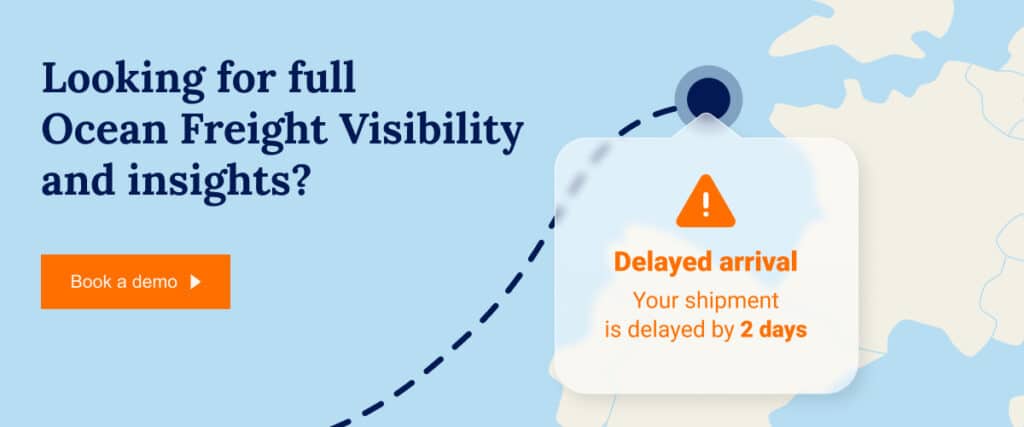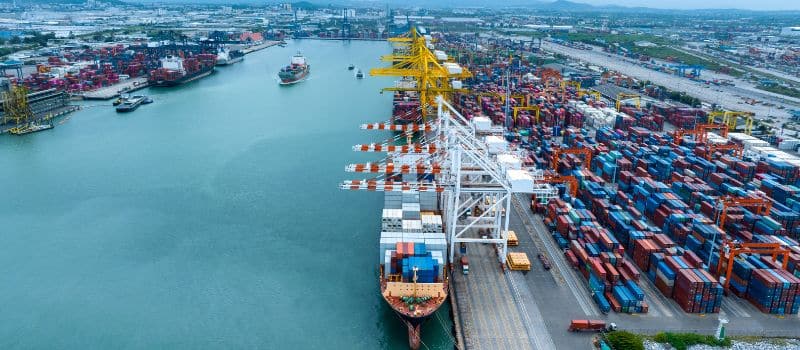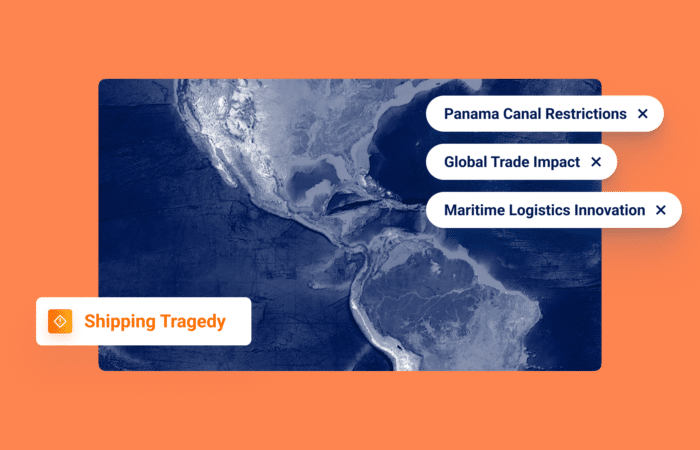What’s inside?
Most carriers are currently unable to provide sufficient end-to-end visibility of maritime shipments. This lack of accurate and reliable information creates significant difficulties in planning and executing operations effectively. McKinsey & Company notes:
“They [surveyed supply chain executives] want to have transparency, and want to be able to decide fast, and decide to do the right thing. What do we need for that? We need to invest in digital planning. Almost 80 percent of the participants said they need to improve, and to invest in digital planning to increase supply-chain visibility to make sure they have the ability to plan and to decide.”
As mentioned in a call that freight forwarders and BCOs had with the Federal Maritime Committee (FMC), the data that businesses require is not readily available from carriers and often requires multiple manual and time-consuming processes, such as phone calls, emails, etc. This is not only frustrating but also costly, as it can result in delayed shipments, unhappy customers, and lost revenue.

The Need for a Single Source of Truth & Real-Time Visibility
A single source of truth, with real-time answers for customers, is crucial for freight forwarders, BCOs, and shippers. The reasons for shipping delays are not easily available, which leaves shippers and forwarders little choice but to become detectives to investigate what went wrong. Only then can they attempt to make the necessary adjustments to their supply chains and stay agile. The process for finding out the reason for a shipping delay is complex, with many phone calls and emails back and forth.
This is why real-time visibility is so important. The vessel(s) involved in your shipment are not sailing alone in the ocean. Just as you would need to know how many people have queued up in line before you at the nearest restaurant to know when your turn will come to place your order, a solution that aspires to predict an accurate ETA for your vessel must have visibility regarding all other relevant vessels.
As discussed in a previous blog post, the berthing order at each port along the container journey helps us understand how long the container vessel will be delayed at each port en route to the POD.
The Importance of ETA Insights
ETA insights will improve your efforts to mitigate the impact of shipping delays and empower you to lead better-informed, fact-based discussions with your carriers about what went wrong during a shipment. It will also assist you in making better planning decisions by identifying the best-performing ports and carriers for your needs. With ETA insights, you can provide accurate, on-time updates to your internal and external customers.
Why are there Shipment Delays?
Based on Windward’s research, since November 2022, 25% of shipment delays were caused by complications during transshipment. For example, a mother vessel arrives later than the allocated feeder vessel to the transshipment port. Another popular reason for delays is rollovers. Carriers regularly overbook their capacity, betting on the majority of booked containers to be delivered by their shippers on time at the port of loading (POL). This scenario is one example of why 19% of late shipments are due to container rollovers.
It’s recommended to use a solution that provides reasons for shipping delays. For example:
- Container rollover – the container failed to be loaded onto the vessel that was scheduled to transport it out of the transshipment port, or POL.
- Transshipment delay – the transshipment will occur later than scheduled.
- Late departure – the vessel left the POL later than scheduled.

Complexity of Transshipments
“Ninety (90)% of world trade is transported by sea,” according to Maersk and this ocean leg of the supply chain is often complicated because “nearly 5,000 container vessels transport over 34 million containers (TEU) around the world, every year.” With that many container vessels and containers in the global container fleet, there is a high possibility of supply chain disruptions.
Under these complicated circumstances, container tracking has become a vital asset for both shippers and freight forwarders. When transshipments are involved, container tracking becomes even more complicated. While in transit to the final port of discharge (POD), the container may stop at various transshipment hubs along the way. This means the container may be moved from vessel to vessel as it is transported to the final POD. For freight forwarders or shippers, tracking their shipments can be a nightmare, as they may need to track thousands of containers.
A Maritime AI™-powered container tracking solution that enables you to manage by exception can help solve this complicated problem. Instantly identify shipments that require attention and easily filter containers based on any combination of customer name, operator name, predicted delay length, delay reason, and much more. For example, if you’re tracking 4,000 shipments, but only 100 are critically delayed or early, and all the rest are on time or not an issue. With exception management, you’d be empowered with updates or notifications for only these 100 shipments – the critical exceptions.
One of the major reasons for delay is transshipments. As explained in a previous Windward blog post, “This is when a container is transported from one vessel to another while in transit to its final port of discharge (POD). In a classic transshipment scenario, container X will leave the original POL on vessel A, travel to a transshipment port, be discharged from vessel A, and be loaded onto vessel B, which will transport it to the final POD. During more complicated scenarios, there could even be one or two more intermediate ports. When transshipments take place, there is a high risk that there may be delays due to port congestion or other external factors.”
Moving from EDI to API
“EDI, which stands for electronic data interchange, is the intercompany communication of business documents in a standard format,” according to IBM. Currently, EDI is the dominant technology for transmitting digital data between supply chain partners. EDI is not intended for “real-time” data exchange. It is structured to periodically transmit data in one direction. If schedules or other elements change, or there is an error in a data element, a supply chain partner won’t know about it until the next scheduled transmission.
A report from Digital Container Shipping Association (DCSA) points out several downsides to EDIs, such as longer testing periods and transmission of unnecessary data.
Application programming interfaces (APIs) are an alternative to EDIs. They enable supply chain participants to exchange data in real-time. APIs also allow stakeholders to automatically request and receive only the data elements they need.
API technology integrated with Maritime AI™ insights can be implemented directly into your existing workflows, allowing you to receive real-time insights that are accurate and reliable. As mentioned above, possessing a single source of truth saves time and money, and is the most efficient solution. Having this kind of visibility will grow your relationship with customers, improving customer satisfaction and loyalty.
Navigating the Path Ahead
Having full visibility of your end-to-end container journey allows you to make informed decisions, bringing confidence to your customers and aligning your supply chain to a single source of truth. Possessing an agile supply chain and understanding shipping delays is crucial for operating your business effectively in the maritime industry.














